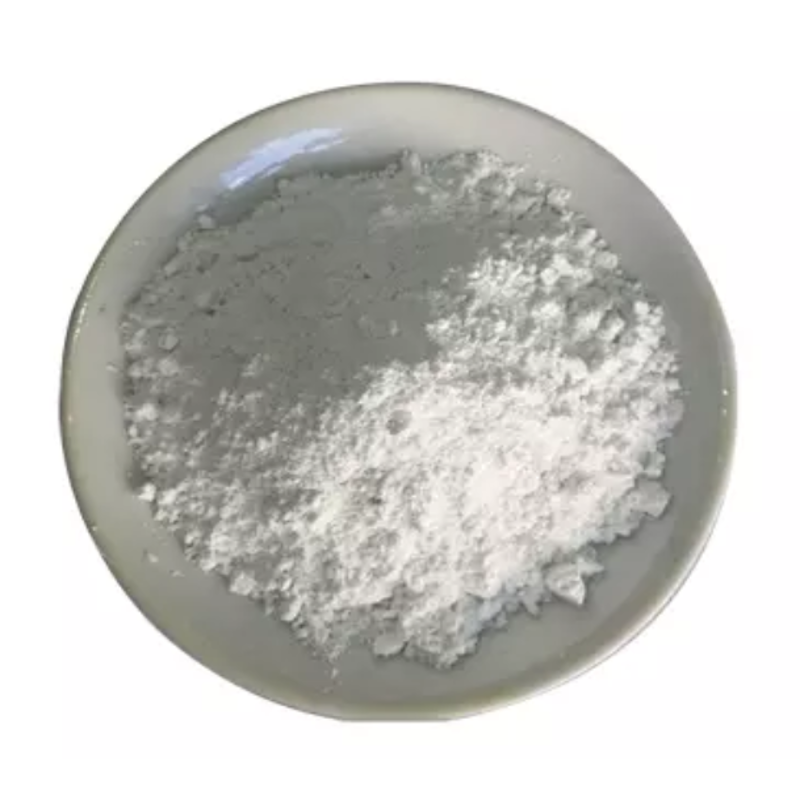-
Categories
-
Pharmaceutical Intermediates
-
Active Pharmaceutical Ingredients
-
Food Additives
- Industrial Coatings
- Agrochemicals
- Dyes and Pigments
- Surfactant
- Flavors and Fragrances
- Chemical Reagents
- Catalyst and Auxiliary
- Natural Products
- Inorganic Chemistry
-
Organic Chemistry
-
Biochemical Engineering
- Analytical Chemistry
-
Cosmetic Ingredient
- Water Treatment Chemical
-
Pharmaceutical Intermediates
Promotion
ECHEMI Mall
Wholesale
Weekly Price
Exhibition
News
-
Trade Service
Due to the shortcomings of dietary fiber itself, there are disadvantages such as taste, flavor, and low acceptance when added to food
Resistant starch, English Resistant Starch, referred to as RS, is a special polysaccharide compound, first discovered in the early 1980s, also known as anti-enzymatic starch, is a kind of indigestible starch
Resistant starch is mainly divided into five categories: physically embedded starch (RS1), natural uncooked starch granules (RS2), retrograded starch (RS3), chemically modified starch (RS4), starch lipid complex (RS5)
Application in bread making
Adding traditional dietary fibers such as barley flour in bread making can improve the nutritional value of bread, but if the content of dietary fiber in bread is too high, the color of the bread will become darker, resulting in a rough taste, grainy texture, and poor quality.
The researchers found that due to the strong water retention of resistant starch, adding pea resistant starch to bread significantly increased the water absorption of the flour and the stickiness of the dough.
Application in biscuit making
Adding resistant starch to cookies, because resistant starch has a lower moisture content than flour, contains less wheat protein, and has a certain water retention, so the higher the proportion of resistant starch, the hardness of the dough increases with the addition ratio.
Resistant starch dilutes the coloring in the cookie recipe, reduces the effect of reducing sugars and amino acids or the color formed by Maillard reactions, and makes the surface of the cookie brighter
The researchers found that the content of slow-digestible starch was determined by making biscuits of different formulas, and the changes in starch digestibility of starch-lipid complex, high-amylose corn starch, wheat starch, low-gluten flour and high-gluten flour before and after baking were observed.
Application in Noodle Making
Adding resistant starch granules to the noodles can improve the brightness, make the noodles softer, and reduce the digestibility of the noodles, but these changes do not affect the taste, toughness, chewiness and hardness of the noodles.
The researchers added RS2 and RS5 to the noodles and found that RS5 was beneficial in reducing the cooking losses of the noodles, and RS2 significantly improved the process and nutritional properties of the cooked noodles
The gelatinization temperature and enthalpy of noodles with the addition of resistant starch decreased
X-ray diffraction showed that the crystallinity of noodles with added resistant starch increased
Application in making microcapsules
Microencapsulation technology is a packaging technology that encapsulates substances in a polymer film in a closed structure and is protected from environmental influences
In addition, after entering the large intestine, resistant starch can also be used as a carbon source for colonic microorganisms, and is degraded to generate short-chain fatty acids such as propionic acid and butyric acid and carbon dioxide that are beneficial to the human body
In the food industry, the use of resistant starch-based microencapsulation technology can greatly improve the activity of probiotics, and can also encapsulate sensitive substances, such as minerals and antioxidants, in an unfavorable environment
The resistant starches used for the preparation of microcapsules are mainly RS2, RS3 and RS4, and because of their anti-enzymatic hydrolysis properties that can effectively protect the vitality of probiotics, as well as the crystalline structure and good crystalline structure that provide stable delivery and sustained release as a slow-release carrier.
Application in puffed food
Adding RS to food can improve the puffing coefficient of extruded cereals and snack foods, so it can be applied to puffed food to reduce the adverse effects of high hardness, low brittleness and poor overall quality caused by traditional dietary fiber on food puffing
.
Some studies have pointed out that after adding a certain amount of RS, the puffing volume of oat food increases, and the puffing coefficient increases with the increase of RS content within a certain range
.
In addition, RS can also improve the foam resistance of grains
.
After the puffed food added with RS is soaked in beverages such as milk, its texture becomes soft, but it still maintains a good crunchy taste
.
Application in fried food
Compared with other RS, retrograded starch has higher stability, which makes retrograded starch better used in fried food
.
Studies have shown that when 20% of flour is replaced with retrograded starch in fried food, the content of dietary fiber in fried food flour is increased by 8.
2%, and it can deepen the color of fried food and improve hardness and crispness
.
Application in dairy products
Cheese with added resistant starch increased moisture content and decreased hardness, but did not affect the cohesiveness and fluidity of cheese
.
When the content of resistant starch was increased from 21.
3% to 43.
2%, the fat content of cheese was reduced from 10% to zero, and almost no fat could be seen under the light microscope.
It can be used as a fat substitute to make low-fat cheese
.
Adding resistant starch during the fermentation and storage of yogurt will solidify the yogurt under the premise of protecting probiotics, make the yogurt more compact, increase the elasticity and viscosity index, aggregate casein, reduce the amount of whey separation, and strengthen coagulation.
The glue network structure reduces the formation of pores and improves the quality of yogurt
.
The study found that using potato RS alone as an emulsion stabilizer has good color, taste and flavor, but the tissue state is not good, and the compound use with pectin and agar can make up for each other.
The overall quality of yogurt reached the best when the amount of gelatin was 0.
03% and the amount of agar was 0.
15%
.
Application in meat products
The effect of adding resistant starch to meat products is even more pronounced
.
Resistant starch can form a gel with myosin in meat.
Due to the hydrophilicity of resistant starch and the fluidity of water inside the gel, the meat product can retain water and juice, and enhance the viscoelasticity of the meat product
.
In the study of the effect of corn resistant starch on the thermal gelation properties of chicken breast myosin, it was found that resistant starch can absorb the water in the gel mixing system, thereby reducing the fluidity of the internal gel and forming a continuous, dense and uniform three-dimensional network structure, the elastic modulus increases, and the gel strength increases
.
Resistant starch can be used as a fat substitute in low-fat meat products
.
The researchers added resistant starch to rainbow trout and found that with the addition of resistant starch, the whiteness of the fish increased slightly
.
This is because resistant starch has the effect of diluting some of the pigment and protein, making the meat whiter and brighter
.
At the same time, the content of malondialdehyde in fish meat decreased, indicating that adding resistant starch can delay fat oxidation during storage
.
The daily intake of starch in Chinese is more than 370g, which is one of the countries with the largest intake of starch in the world.
Under the advocacy of the balanced diet model, it is necessary to appropriately change the properties of starch to achieve the purpose of balanced nutrition
.
China is rich in starchy foods.
With the increasing market demand for dietary fiber foods, foods processed with resistance as raw materials have broad application prospects
.
(Source: Food R&D and Production)
"China Food News" (May 24, 2021 06 edition)
(Editor-in-charge: Yang Xiaojing)







